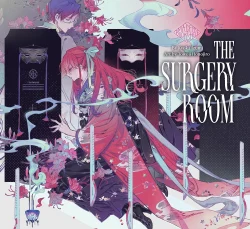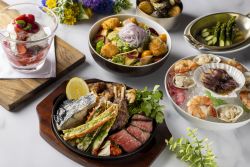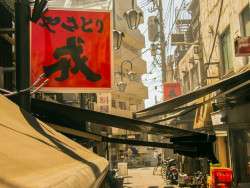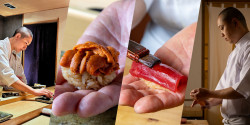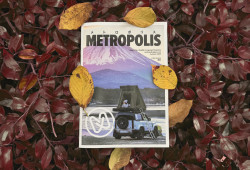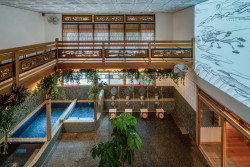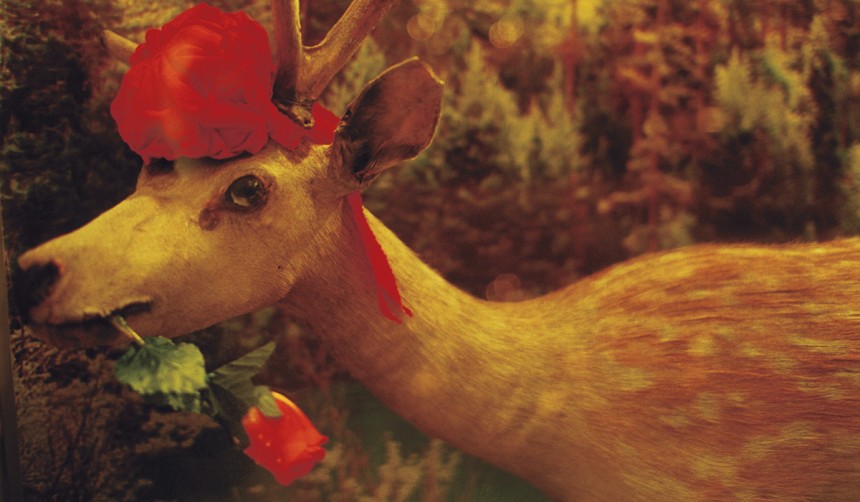
If there’s one word that sums up the work of photographic artist Mika Ninagawa, it’s “lush.” Famed for her “Ninagawa color,” her pictures of flowers, goldfish, and celebrities seem to “bleed” and “melt” with vivid colors, rather like cheese on pizza, creating images that are visceral, raw, and—most importantly—luxuriant.

(Copyright Mika Ninagawa, Courtesy of Tomio Koyama Gallery)
The daughter of famed theater director Yukio Ninagawa, she’s also very much part of the Japanese cultural elite, and much in demand for portraits, advertisements, and magazine shoots. But side-by-side with her commercial work, she also maintains a serious “art” career, with themed photo books and exhibitions, like the one at the Hara Museum of Art, which explore the medium of photography in more profound ways.
The show’s title, “Mika Ninagawa: Self Image,” might lead one to expect a narcissistic focus—and, in a sense, it is. But Ninagawa’s “selfies” are hardly a vanity project. This is signalled by the fact that the section of the show dedicated to these is the only part that eschews her trademark “Ninagawa color,” using bleaker, starker monochrome instead.
Several of these, including some of an “intimate” nature, hint at the emotional turmoil of the thrice-divorced 49-year-old. They also suggest that she uses photography as a way of coming to terms with her emotions. As a subtle touch, the curators have decorated the gallery here with the chess-board pattern of Ninagawa’s bathroom, the backdrop of some of them.
But while this part of the exhibition has an element of guilty voyeurism about it, the most effective and artistic part of the show is the large downstairs gallery, featuring a collage of colorful images.
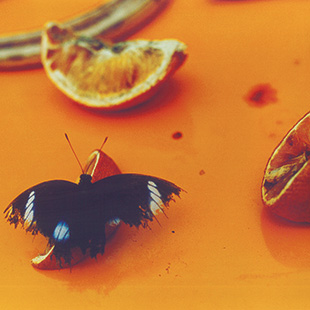
(Copyright Mika Ninagawa, Courtesy of Tomio Koyama Gallery)
Supplementing her usual trademarks—flowers, goldfish, parted lips—are also images of stuffed animals and people at a musical festival. In these deceptively soft images, as lush and enticing as anything shot for a magazine spread, we encounter Ninagawa’s hard-edged cynicism.
With the festival goers, she makes a point of highlighting their hands thrown up in the air as if in distress.
“Losing one’s sense of ego while dancing to explosive music is a very primitive act, but do they look like they are having fun and are in a state of euphoria?” Ninagawa asks. “It seems to me they aren’t. On the contrary, they look as if they are calling for help or are frightened by the much-too-bright light.”
This sense of darkness that lies just under the surface also explains her obsession with goldfish, which feature prominently in a video installation. Ninagawa is drawn to these creatures because they have been reshaped solely for the purpose of human appreciation.
“By compounding deformity with deformity, it becomes more interesting as a shape, but weaker as a life form,” she explains. “Its lifespan is shortened as it becomes more susceptible to bacterial infection.”
In essence, Ninagawa’s work explores the balance between beauty and strength, color and shape, femininity and masculinity; and between the ability to approach reality directly or through various filters of perversion. But these themes and dichotomies are buried deep in her work, like the poison or medicine of a sugar-coated pill.
Until May 10. Hara Museum of Contemporary Art. Nearest station: Kitashinagawa.


